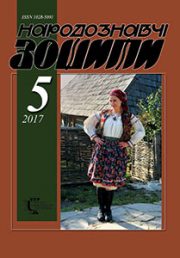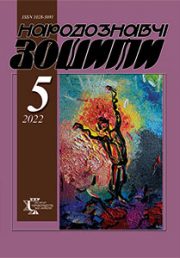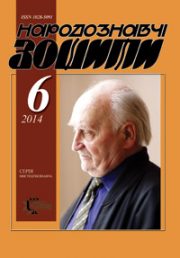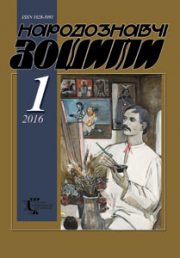The Ethnology Notebooks. 2021. № 5 (161), 1247—1260
UDK 75/76.071.1(477.83-25)”193/198″З.Флінта
DOI https://doi.org/10.15407/nz2021.05.1247
ZENOVII FLINTA’S PAINTING, GRAPHICS, CERAMICS OF THE 1960S 80S: GENERALIZED ANALYSIS
MATKOVSKA Ivanna
- ORCID ID: https://orcid.org/0000-0001-7941-051X
- Graduate student of Lviv National Academy of Arts,
- Kubijovycha Street, 38, 79011, Lviv, Ukraine,
- Contacts: e-mail: ivanna_novakivska@ukr.net
Abstract. Introduction. Zenovii Flinta is a Lviv nonconformist artist, which in the 1960s—80’s realized in painting, graphics and ceramics informal creative searches and embodied in allegory philosophical images of his own Universe, despite prohibitions and pressure. Problem statement. Until now has not been conducted a generalized scientific study of all branches of Z. Flinta’s creativity of the 1960s and 1980s. Purpose of this researche is complex art history — researche of Z. Flinta’s painting, graphics and ceramics of 1960—80’s — subject of our researche. Prospect of this study will help to form a holistic picture of Z. Flintа’s creativity and rethink its significance.
Results. For the first time we conducted a comprehensive scientific study of Z. Flinta’s painting, graphics and ceramics of the 1960s and 80s, also we systematized the directions his creativity for the first time: Informal researches in painting in the 1960s; Formation of the author’s manner in painting and graphics of the 1960s — the first. 1970s; A series of allegorical graphic works of 1968, Allegorical painting of mature period of 1970—80’s; Symbolic portraits of the 1980s; Artistic Ceramics 1960—80’s. Influence of painting and ceramics of the artist none of these areas was previously worked out or systematized.
Conclusion. We for the first time 1) Highlighted the stages of formation of the author’s picturesque manner in 1960—1980-ies: early period of painting of the 1960s with turquoise-gray, purple-oochist and mystically dark blue periods; a series of grotesque allegorical graphic works of 1968; mature period of the author’s picturesque manner of 1970—1980-ies. 2) Conducted an art history analysis of the symbolic portraits of Z. Flinta of the 1980s. 3) Conducted a generalized art study of Z. Flinta’s Art ceramics of the 1960s—1980s and highlighted the direction of Z. Flinta’s artistic ceramics, which we compared with artist’s paintings and discovered the syntheticity of the Z. Flintas artworks, which embodied his painting in ceramics.
Keywords: Zenovii Flinta; generalized scientific study of Z. Flinta’s painting, graphics and ceramics of the 1960s—80s; Lviv Fine Arts of 1960—80s; Z. Flinta’s informal painting and allegorical works of the 1960s and 1980s.
Recreived 11.09.2021
REFERENCES
- Matkovska, І. (2018). Life and art of Zenovii Flinta: analysis of sources. Bulletin of the Lviv National Academy of Arts (Issue 37, pp. 224—240). Lviv [in Ukrainian].
- Matkovska, І. (2017). The Influence of the Worldview and Artistic Principles of Roman Selsky and Karlo Zvirynsky on the Formation of the Creative Personality of Zenovii Flinta. Bulletin of the Lviv National Academy of Arts (Issue 31, pp. 284—294). Lviv [in Ukrainian].
- Matkovska, І. (2019). Аllegorical works of Zenovii Flinta and their interpretation. The Ethnology notebooks, 6 (150), 1684—1691 [in Ukrainian].
- Matkovska, І. (2020). Formal search and experiments in Zenovii Flinta’s 1960s — painting under the influence of European and Ukrainian modernism of 1910—1930-ies: systematization of directions. The Etnhnology Notebooks, 5, 1144—1157 [in Ukrainian].
- Matkovska, І. (2021). Archive materials: Zenovii Flinta — student and prominent teacher of the Lviv State Institute of Applied and Decorative Arts. Bulletin of the Lviv National Academy of Arts (Issue 45). Lviv [in Ukrainian].
- Golubec, O. (1991). Lviv ceramics (Pp. 10, 52). Kyiv [in Ukrainian].







